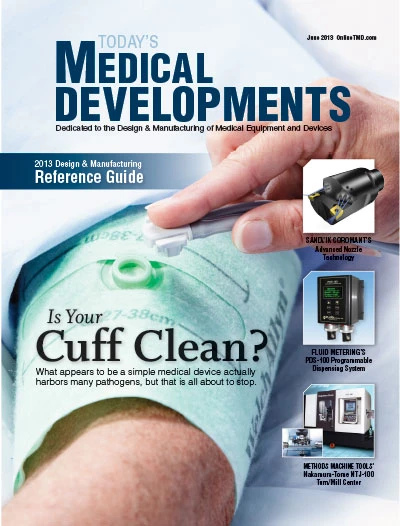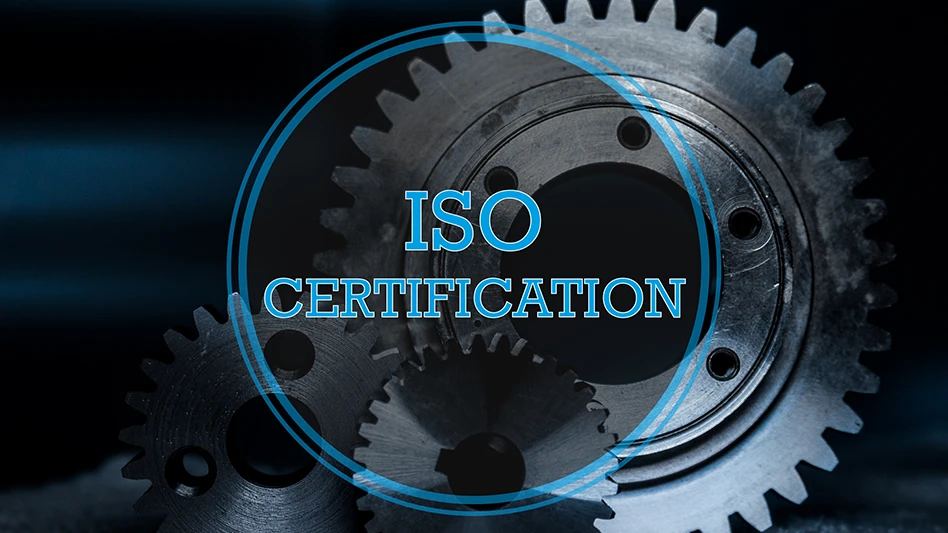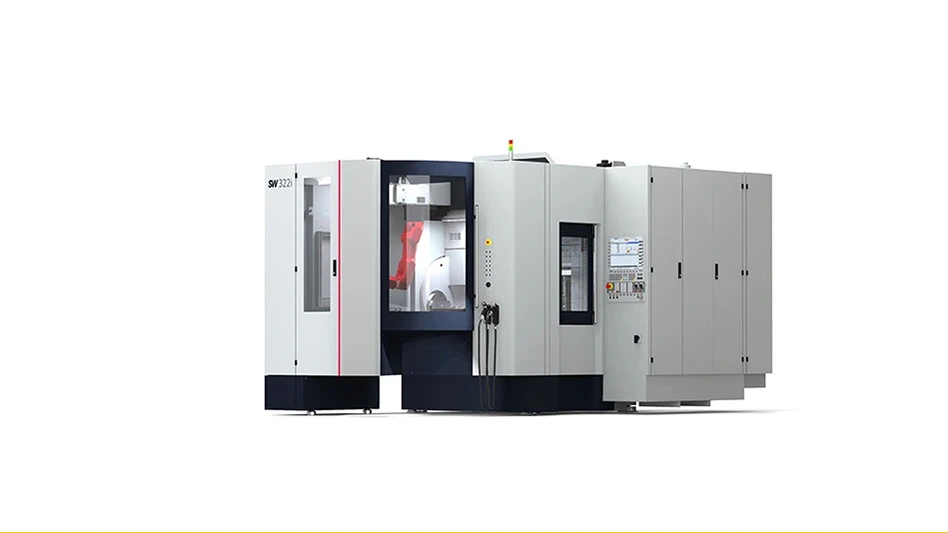 A nanocomponent that is capable of learning: The Bielefeld memristor built into a chip is 600 times thinner than a human hair. |
Scientists have long been dreaming about building a computer that would work like a brain. This is because a brain is far more energy saving than a computer, it can learn by itself, and it does not need any programming. Privatdozent [senior lecturer] Dr. Andy Thomas from Bielefeld University’s Faculty of Physics (Bielefeld, Germany) is experimenting with memristors – electronic micro-components that imitate natural nerves. Thomas and his colleagues proved that they could do this a year ago. They constructed a memristor that is capable of learning. Thomas is now using his memristors as key components in a blueprint for an artificial brain. He presented his results earlier this year in the print edition of the Journal of Physics.
Memristors are made of fine nanolayers and can connect electric circuits. For several years now, the memristor has been considered the electronic equivalent of the synapse. Synapses are, so to speak, the bridges across which nerve cells (neurons) contact each other. Their connections increase in strength the more often they are used. Usually, one nerve connects to other nerve cells across thousands of synapses.
Like synapses, memristors learn from earlier impulses. In their case, these are electrical impulses that, as yet, do not come from nerve cells but from the electric circuits to which they are connected. The amount of current a memristor allows to pass depends on how strong the current was that flowed through it in the past and how long it was exposed to it.
Thomas explains that because of their similarity to synapses, memristors are particularly suitable for building an artificial brain – a new generation of computers. Based on his own experiments and research findings from biology and physics, Thomas summarizes which principles taken from nature need to be transferred to technological systems if such a neuromorphic (nerve-like) computer is to function. Such principles are that memristors, just like synapses, have to note earlier impulses, and that neurons react to an impulse only when it passes a certain threshold.
Thanks to these properties, synapses can be used to reconstruct the brain process responsible for learning, Thomas says. He takes the classic psychological experiment with Pavlov’s dog as an example. The experiment shows how you can link the natural reaction to a stimulus that elicits a reflex response with what is initially a neutral stimulus – this is how learning takes place. If the dog sees food, it reacts by salivating. If the dog hears a bell ring every time it sees food, this neutral stimulus will become linked to the stimulus eliciting a reflex response. As a result, the dog will also salivate when it hears only the bell ringing and no food is in sight. The reason for this is that the nerve cells in the brain that transport the stimulus eliciting a reflex response have strong synaptic links with the nerve cells that trigger the reaction.
If the neutral bell-ringing stimulus is introduced at the same time as the food stimulus, the dog will learn. The control mechanism in the brain now assumes that the nerve cells transporting the neutral stimulus (bell ringing) are also responsible for the reaction – the link between the actual neutral nerve cell and the salivation nerve cell also becomes stronger. This link can be trained by repeatedly bringing together the stimulus eliciting a reflex response and the neutral stimulus.
Both a memristor and a bit work with electrical impulses. However, a bit does not allow any fine adjustment – it can only work with on and off, where in contrast, a memristor can raise or lower its resistance continuously.
“This is how memristors deliver a basis for the gradual learning and forgetting of an artificial brain,” Thomas explains.
Bielefeld University
Bielefeld, Germany
www.uni-bielefeld.de

Explore the June 2013 Issue
Check out more from this issue and find your next story to read.
Latest from Today's Medical Developments
- Tariffs threaten small business growth, increase costs across industries
- Feed your brain on your lunch break at our upcoming Lunch + Learn!
- Robotics action plan for Europe
- Maximize your First Article Inspection efficiency and accuracy
- UPM Additive rebrands to UPM Advanced
- Master Bond’s LED415DC90Med dual-curable adhesive
- Minalex celebrates 60 years of excellence in miniature aluminum extrusions
- Tormach’s Chip Conveyor Kit for the 1500MX CNC Mill





